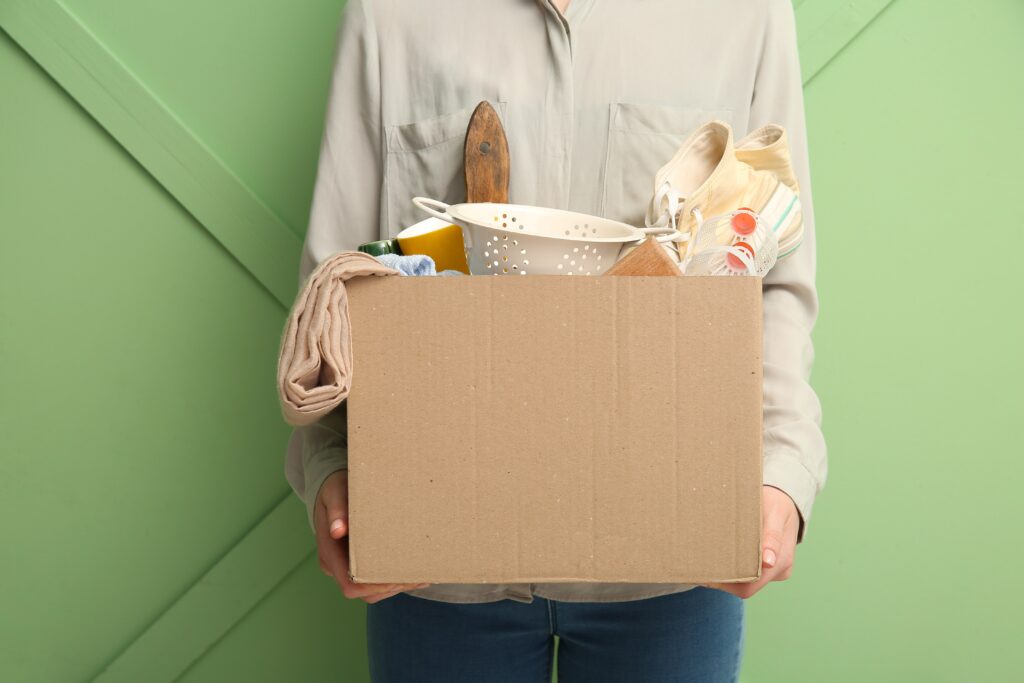How to Pack Your Kitchen for Moving
Pack Your Kitchen for Moving: A Modern Step-by-Step Guide
Smart Packing Starts in the Kitchen
Let’s be honest—packing up your kitchen can feel overwhelming. Between perishable food, breakable dishes, and all those oddly shaped gadgets, it’s hard to know where to start. But don’t worry—we’ve got you covered. This updated guide walks you through how to pack your kitchen for moving with less stress, fewer broken items, and smarter organization.
Whether you’re downsizing, relocating, or prepping for storage, these expert tips will help you tackle your kitchen like a pro.
Step 1: Clear Out the Fridge & Freezer
It’s tempting to leave the fridge for last—but starting here gives you time to use what you have and avoid food waste.
- Take inventory: Write down what’s in your fridge and freezer. Toss anything expired or unlikely to get used.
- Plan smart meals: Use a tool like Supercook to find recipes based on the ingredients you already have.
- Minimize shopping: Only buy essentials. Stretch what you’ve got until moving week.
- Defrost early: A few days before the move, unplug and defrost your freezer. Clean and dry both appliances completely.
- Use a cooler: If you’re bringing any cold items, pack them in a cooler with ice packs for the ride.
- Bonus tip: Once dry, your fridge can be used to store lightweight dry goods like paper towels or linens during the move.
- Secure for transport: Tape the doors shut and wrap the fridge in stretch wrap to prevent damage.
Step 2: Sort & Pack Your Pantry
The pantry is one of the easiest zones to tackle—but it’s also easy to overpack. Here’s how to keep it simple and efficient:
- Purge expired items: Check dates and toss anything stale or opened for too long.
- Donate what you don’t want: Pack up shelf-stable goods for your local food bank.
- Spice it right: Tape down the lids of spice jars and place them in a sealed plastic bag to prevent leaks.
- Wrap glass jars: Use bubble wrap or double layers of packing paper. Place these heavy items at the bottom of your boxes.
- Handle cans wisely: Use small boxes, or layer heavier cans on the bottom and cushion with light snacks like chips on top.
- Protect fragile packaging: Items in flimsy boxes or bags should go on top—or be packed separately in sealed bins or bags.
Step 3: Cutlery & Sharp Items
Small items like forks and knives can quickly become a hassle if packed improperly. Here’s how to keep everything organized and injury-free:
- Keep out essentials: Leave out 2 full sets of utensils per person for meals during your last week.
- Sort and bundle: Organize by type (forks, spoons, etc.) and secure each group with a rubber band.
- Wrap it up: Bundle in 2 layers of packing paper and place in a shoebox or small container. Tape it shut.
- Handle knives carefully: If you have a knife block, use it. Otherwise, wrap blades in cardboard, label clearly, and secure with tape. More knife packing tips.
Step 4: Appliances
From blenders to coffee makers, your kitchen appliances need extra care. Follow these steps to protect your investment:
- Use original boxes: If you still have them, they offer the best fit and protection.
- No box? No problem: Medium-sized moving boxes work best. Line the bottom with bubble wrap or packing paper.
- Clean thoroughly: Wipe down and dry each appliance to prevent mold, odors, and pests—especially if you’ll be storing them.
- Disassemble if needed: Detach breakable or glass parts and wrap them separately.
- Label small parts: Use Ziploc bags for cords and attachments, then tape them to the appliance.
- Specialty items: Packing a KitchenAid mixer? Here’s how.
Step 5: Pots, Pans & Lids
These bulky items take up space fast, so pack them smart:
- Nest your cookware: Stack smaller pots inside larger ones, adding cardboard or packing paper in between to prevent scratches.
- Wrap lids separately: Use bubble wrap or paper to cushion lids, and pack them standing upright when possible.
Step 6: Plates & Dishes
Nothing breaks hearts (and budgets) like broken dinnerware. Protect yours with these steps:
- Pack plates vertically: Think of them like records—standing upright reduces pressure and breakage.
- Layer protection: Line the box bottom with paper, then place bubble wrap, foam, or cardboard between each dish.
- Use towels for fragile items: Dish towels add cushioning and reduce shifting.
- Use dish pack boxes: They’re designed specifically for fragile kitchenware. Find them here.
- Don’t overpack: Stick to small boxes to avoid breakage and make lifting easier.
Step 7: Furniture & Kitchen Extras
Some kitchens include breakfast nooks, bar stools, or built-in furniture. These need special care too:
- Disassemble when possible: Unscrew legs and hardware, bag and label parts, and tape them to the furniture frame.
- Protect surfaces: Wrap pieces in towels or moving blankets to prevent dings and scratches.
- Stack carefully: Nest chairs seat-to-seat with a cloth between to avoid scraping.
- Reinforce edges: Cardboard guards or foam corners protect vulnerable areas in transit.
Step 8: Breakables & Glassware
Your mugs and wine glasses need extra TLC. Here’s how to avoid heartbreak on moving day:
- Double wrap everything: Use packing paper, bubble wrap, or even socks for soft padding.
- Use small boxes: Avoid large boxes that allow items to shift. Tape them closed securely.
- Label clearly: Write “FRAGILE” on all sides. Keep these boxes separate from heavy items.
Step 9: All the Miscellaneous Stuff
Every kitchen has those random things—graters, bag clips, rolling pins, etc. Here’s what to do:
- Group like items: Toss similar gadgets into Ziploc bags or wrap them together in paper.
- Use for filler: Smaller tools are perfect for filling space in other boxes.
- Pack mindfully: Don’t just throw it all in—fragile items still need protection.
Storage Success Starts with the Right Space
Packing your kitchen doesn’t have to be a nightmare—it just takes the right plan, a little patience, and smart storage. If you’re looking for a way to simplify your move, Guardian Storage offers clean, secure storage units perfect for kitchen items, furniture, and more.





